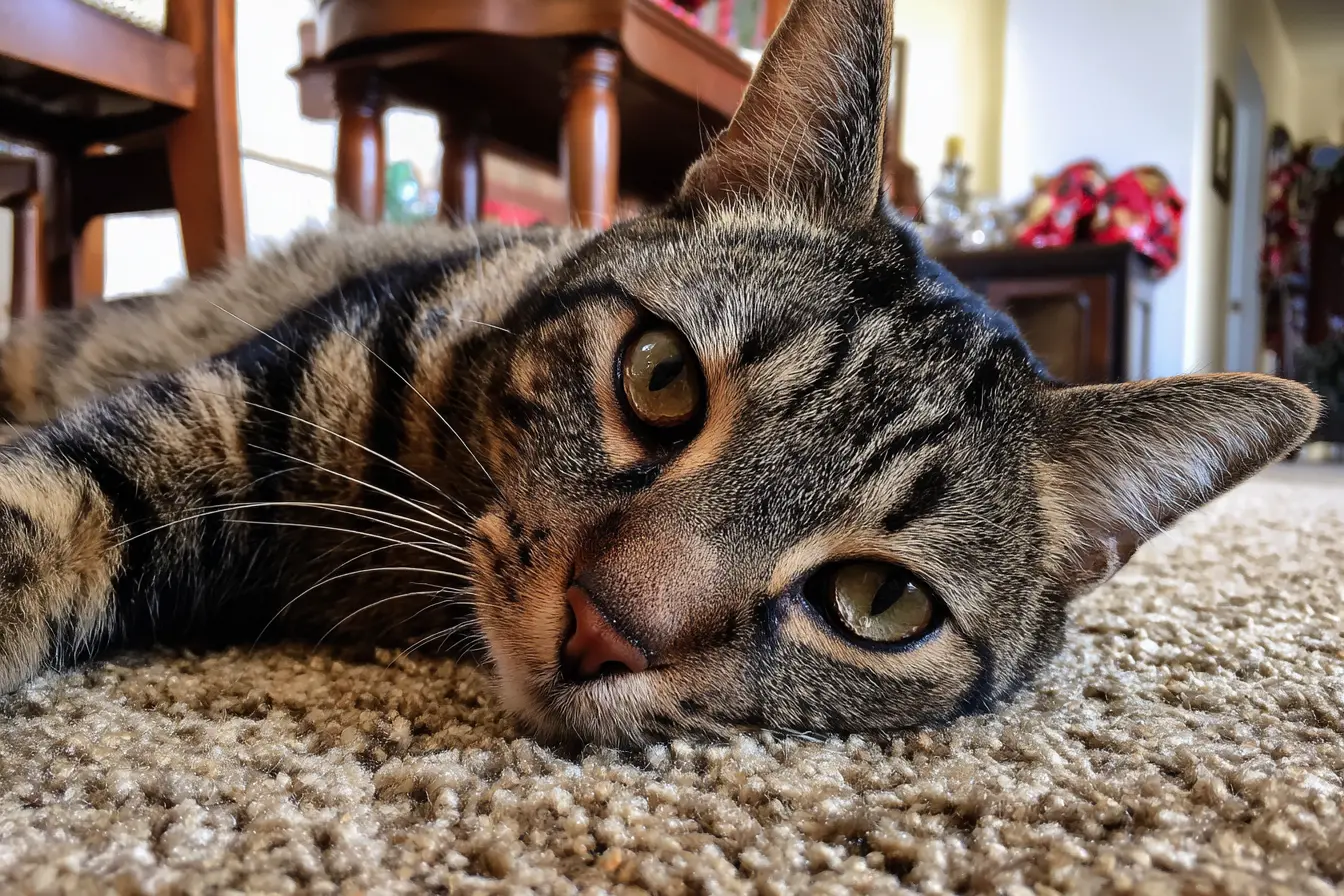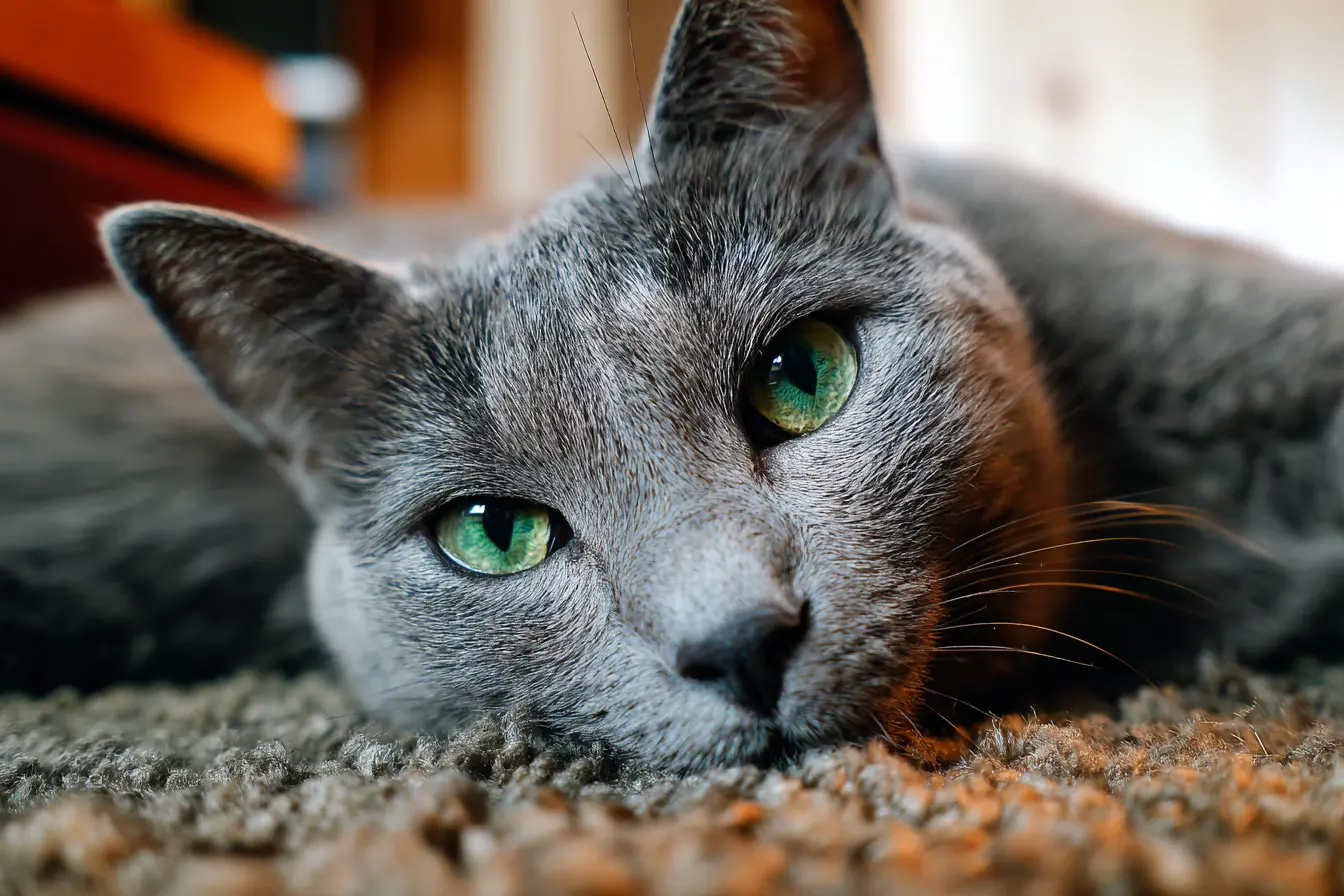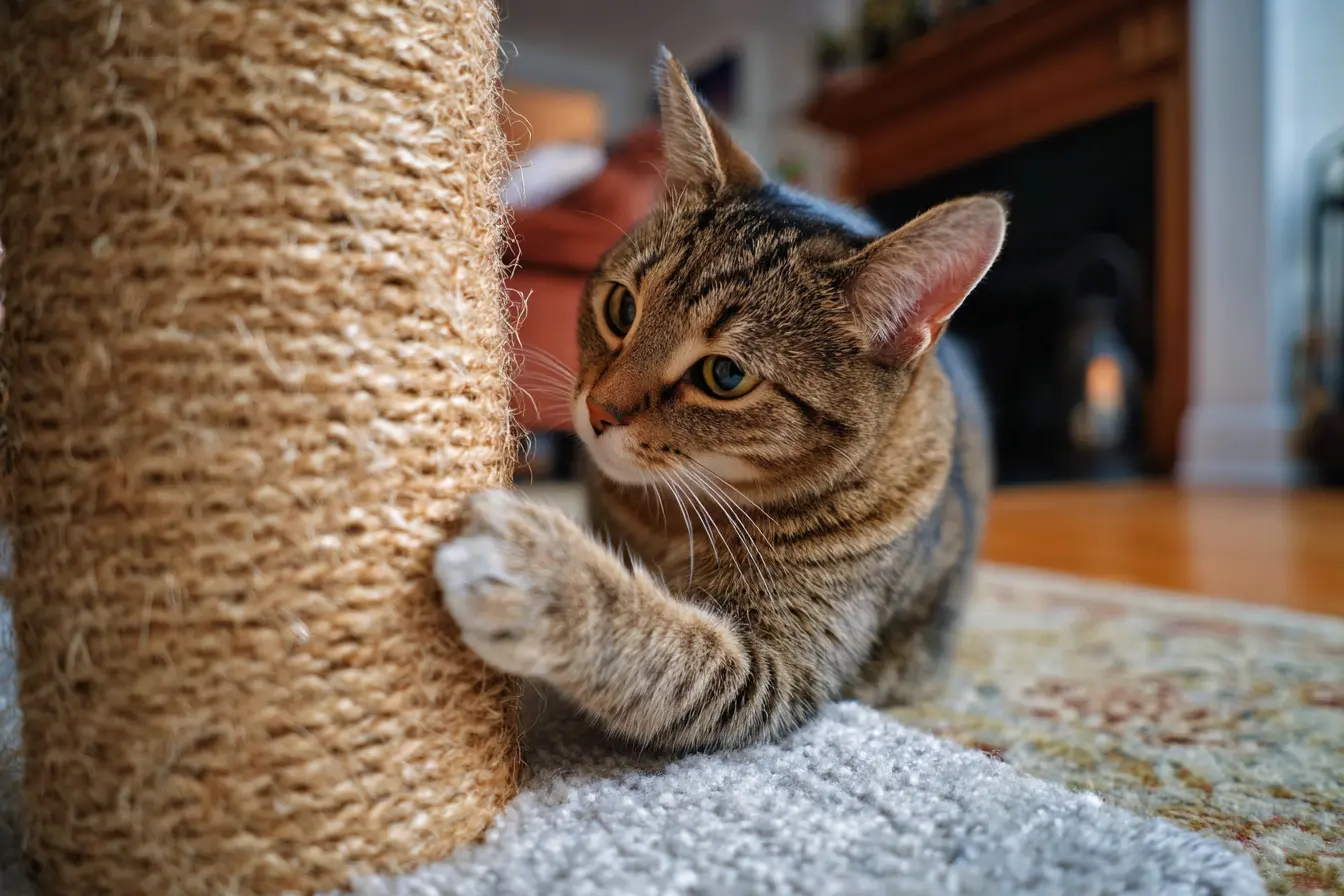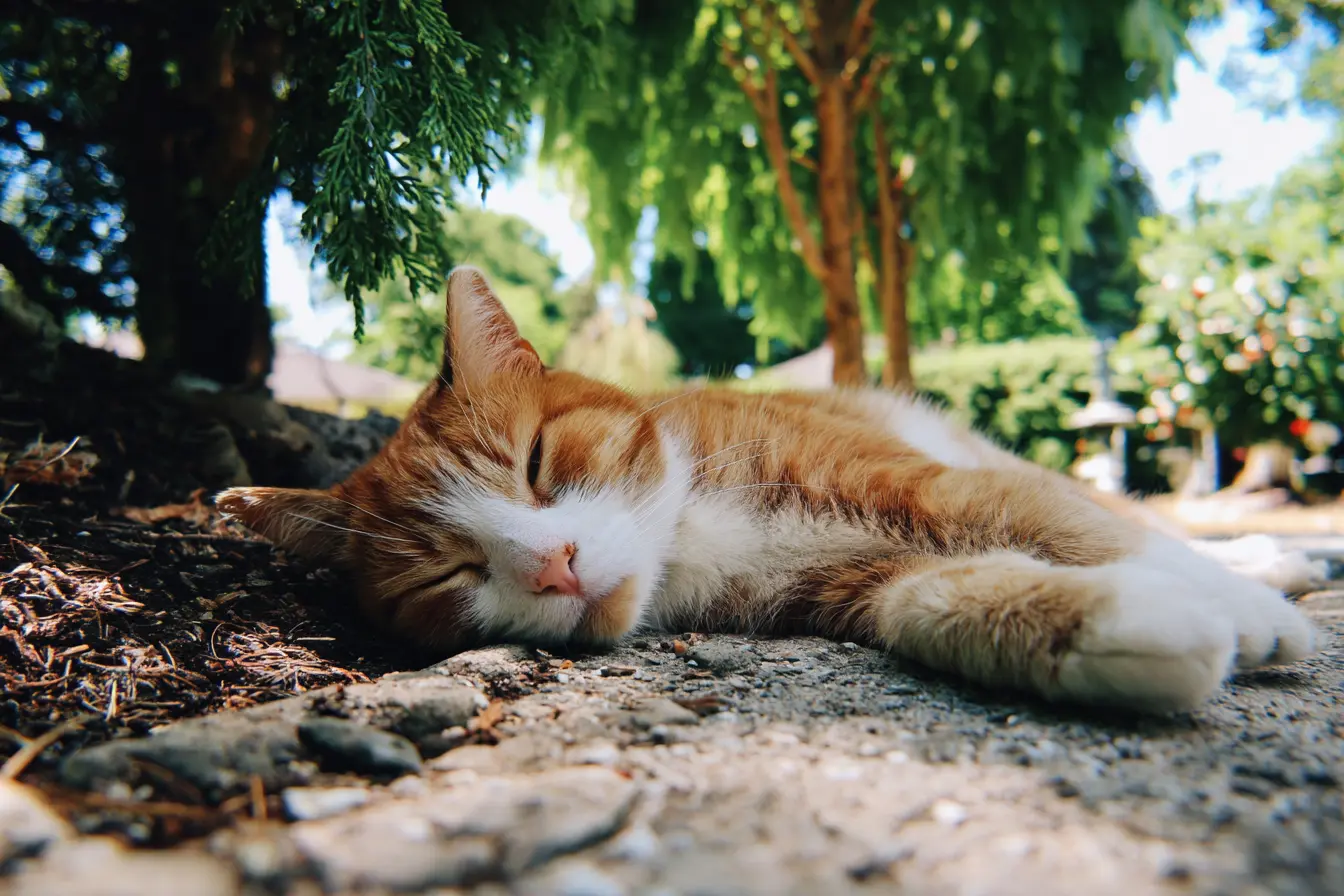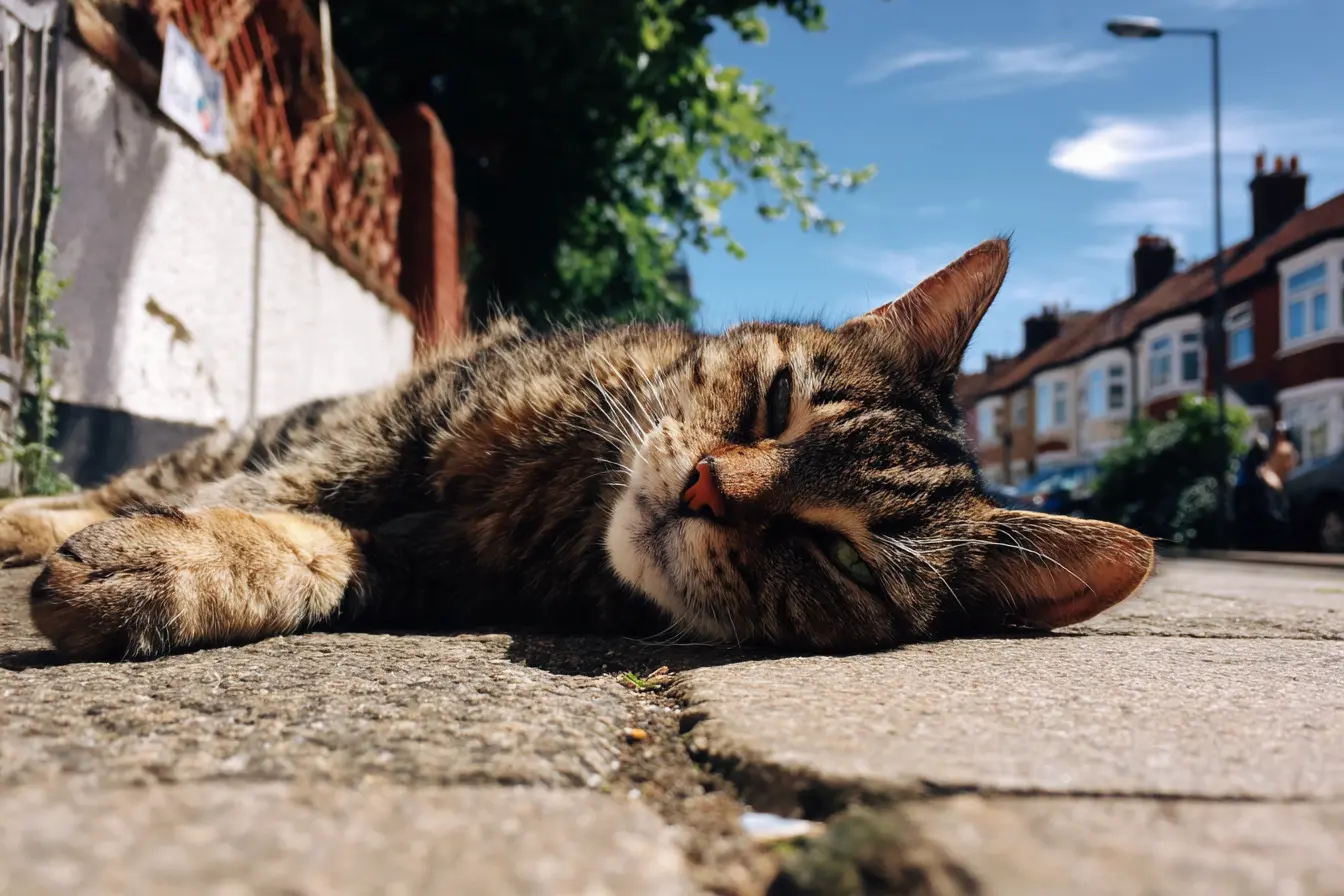
Heatstroke in Cats: Causes, Symptoms, Treatment, and Prevention
Heatstroke in cats is a life-threatening condition that occurs when a cat’s body temperature rises dangerously high, preventing the body from cooling down. Unlike dogs, cats are generally more adept at regulating their body temperature, but they can still suffer from heatstroke in extreme conditions. Without prompt treatment, heatstroke can cause organ failure and death.
Understanding the causes, symptoms, and treatment options for heatstroke can help cat owners protect their pets from this serious condition.
What is heatstroke in cats
Heatstroke, also known as hyperthermia, occurs when a cat’s body temperature rises above 39.2°C and the body’s cooling mechanisms fail. A cat’s normal body temperature is between 38.1°C and 39.2°C. If their temperature exceeds 40.5°C, it can lead to severe complications, including organ failure, seizures, and death.
Cats primarily regulate their body temperature through grooming and seeking shade, but in extremely hot environments, these methods may not be enough to prevent heatstroke.
Causes of heatstroke in cats
Heatstroke is caused by prolonged exposure to excessive heat and an inability to cool down.
Common causes
- Being trapped in a hot room, conservatory, or car
- Lack of shade or ventilation on a hot day
- Excessive exercise in warm conditions
- High humidity, making it harder for cats to cool themselves through grooming
- Overweight or obese cats, which have more difficulty regulating their temperature
- Underlying health conditions, such as respiratory or heart disease
- Brachycephalic breeds, such as Persians and Scottish Folds, which have breathing difficulties that make cooling down harder
Even indoor cats can suffer from heatstroke if they are left in a poorly ventilated home during a heatwave.
Symptoms of heatstroke in cats
Recognising heatstroke early is essential, as symptoms can escalate quickly.
Early signs of heatstroke
- Excessive panting or open-mouth breathing
- Restlessness and seeking cool surfaces
- Drooling or excessive salivation
- Rapid heart rate
Advanced symptoms
- Bright red or pale gums
- Lethargy or weakness
- Vomiting or diarrhoea
- Tremors or seizures
- Loss of coordination or disorientation
- Collapse or unconsciousness
If a cat shows any of these symptoms, immediate action is required.
Emergency treatment for heatstroke in cats
If a cat is suffering from heatstroke, cooling them down quickly and safely is essential.
First aid for heatstroke
- Move the cat to a cool, shaded area immediately.
- Offer small amounts of cool water but do not force them to drink.
- Dampen their fur with a cloth soaked in cool, not ice-cold, water. Focus on the paws, ears, and belly.
- Use a fan or air conditioning to help lower their body temperature.
- Contact a vet immediately and continue cooling on the way to the clinic.
Do not use ice water or immerse the cat in cold water, as this can cause shock and worsen the condition.
Veterinary treatment for heatstroke
Once at the vet, treatment focuses on stabilising the cat and preventing organ damage.
Veterinary treatments may include
- Intravenous fluids to lower body temperature and prevent dehydration
- Oxygen therapy if breathing is compromised
- Medication to prevent seizures and inflammation
- Blood tests to check for organ damage
Some cats may require hospitalisation if heatstroke has caused severe complications.
Complications of heatstroke
Even if a cat recovers from heatstroke, there may be long-term effects.
Potential complications
- Kidney failure due to dehydration and tissue damage
- Brain damage from prolonged overheating
- Heart abnormalities caused by heat stress
- Blood clotting disorders
- Increased risk of future heatstroke episodes
Cats that have suffered from heatstroke before are more vulnerable to heat in the future.
How to prevent heatstroke in cats
Preventing heatstroke is essential, particularly during warm weather.
Tips for keeping cats cool
- Ensure fresh water is always available
- Keep indoor spaces well-ventilated with fans or air conditioning
- Provide shaded areas for outdoor cats
- Use cooling mats or damp towels for cats to lie on
- Avoid excessive handling or play during hot weather
- Freeze a bottle of water and wrap it in a towel for the cat to lean against
- Offer wet food, which provides additional hydration
Special precautions for high-risk cats
Certain cats require extra care in hot weather.
- Brachycephalic breeds such as Persians and Scottish Folds are more prone to breathing difficulties and struggle to cool down effectively
- Overweight cats have excess body fat that traps heat, making it harder for them to regulate their temperature
- Senior cats and those with heart or respiratory conditions are at greater risk of heat-related illness
How to check if a cat is overheating
Owners can monitor their cat’s temperature to detect early signs of overheating.
- A normal body temperature is between 38.1°C and 39.2°C
- A temperature above 40°C is dangerous and requires immediate cooling
To check a cat’s temperature, use a digital rectal thermometer with lubricant. If a cat’s temperature is too high, take action to cool them down.
When to seek veterinary help
A vet should be contacted immediately if a cat shows any of the following signs
- Difficulty breathing or collapse
- Vomiting or diarrhoea after being in the heat
- Loss of consciousness or seizures
- Temperature above 40°C that does not reduce with cooling efforts
Heatstroke is a medical emergency, and early intervention can save a cat’s life.
Myths about heatstroke in cats
Cats can always find shade and cool spots
While cats instinctively seek out cool areas, they may still struggle to regulate their temperature in extreme heat or if they are trapped in an enclosed space.
Cats do not get heatstroke because they do not pant like dogs
Although cats pant less frequently than dogs, they can still overheat, particularly in high humidity or when exposed to prolonged heat.
Indoor cats are not at risk of heatstroke
Indoor cats can still suffer from heatstroke if they are in poorly ventilated homes, conservatories, or rooms that trap heat.
Conclusion
Heatstroke in cats is a life-threatening condition that requires immediate attention. Recognising the early signs, acting quickly, and taking preventative measures can help keep cats safe in warm weather.
By providing shade, fresh water, and avoiding excessive heat exposure, owners can protect their pets from heatstroke and ensure they stay healthy and comfortable throughout the summer months.
Contents
- What is heatstroke in cats
- Causes of heatstroke in cats
- Symptoms of heatstroke in cats
- Emergency treatment for heatstroke in cats
- Veterinary treatment for heatstroke
- Complications of heatstroke
- How to prevent heatstroke in cats
- Special precautions for high-risk cats
- How to check if a cat is overheating
- When to seek veterinary help
- Myths about heatstroke in cats
- Conclusion
Tags
Vets near you
Speciality vets
- Aquatics vet specialists
- Birds vet specialists
- Camelids vet specialists
- Cats vet specialists
- Cattle vet specialists
- Deer vet specialists
- Dogs vet specialists
- Equines vet specialists
- Exotic vet specialists
- Goats vet specialists
- Pigs vet specialists
- Poultry vet specialists
- Sheep vet specialists
- Small Mammals vet specialists
- Wild vet specialists
